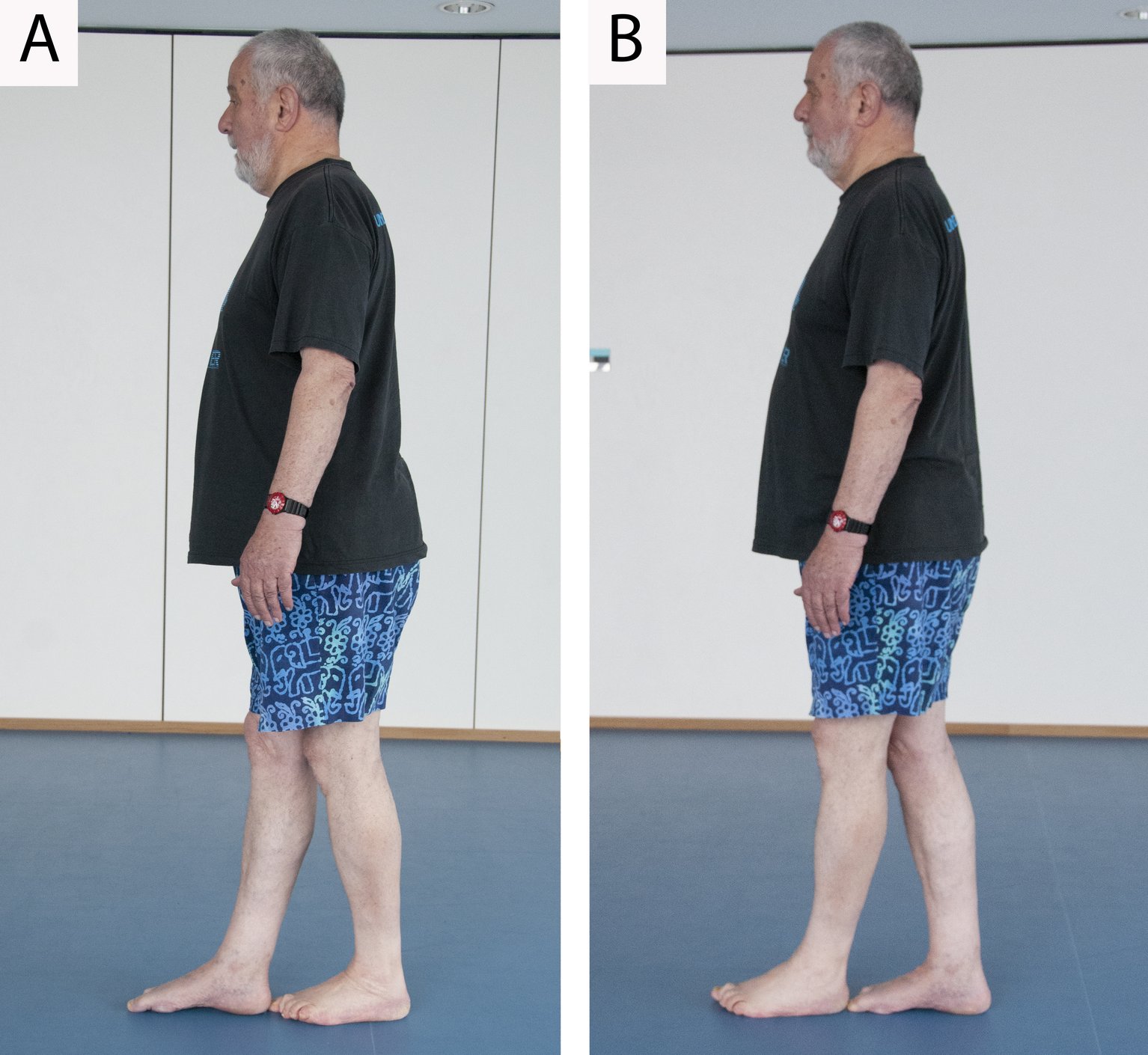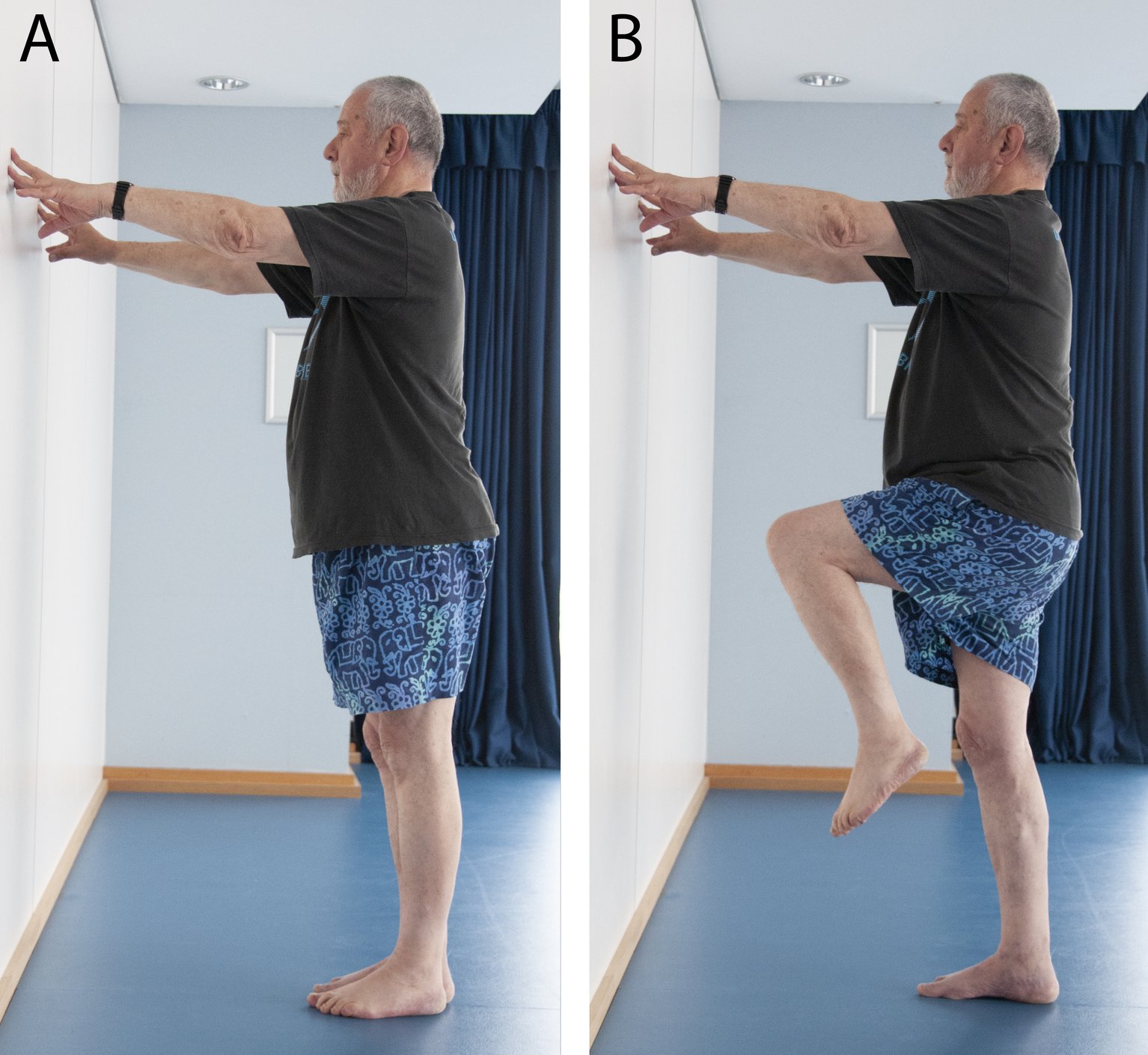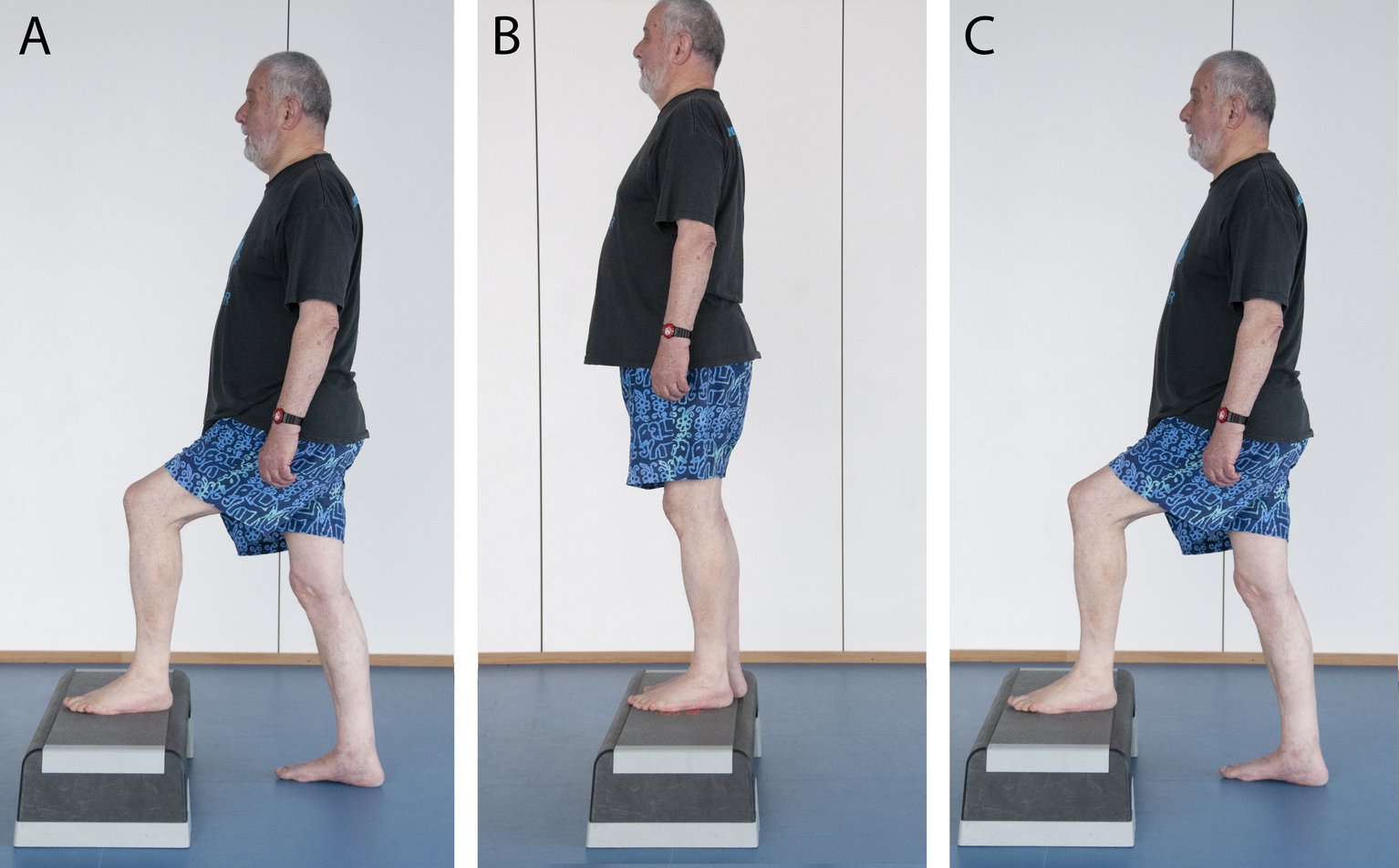Today’s blog is the second and concluding part of our look at gentle exercises to maintain and improve balance as you get older or less mobile.
Whatever mobility issues you’re facing, it’s important to keep exercising regularly in any way you can manage, and under the current coronavirus restrictions, that probably means exercising at home. Giving in to immobility can lead to various medical problems, while exercising regularly can help improve your balance, core strength and mobility, reducing the risk of falls.
We featured the first two balance exercises in yesterday’s blog, with the final three described below. Most people should be able to manage these gentle exercises at their own pace, but if any of them cause you a particular problem, avoid that exercise or see if you can adapt it to suit your circumstances.
 Heel-to-toe walk: One of the best ways to perform this exercise is to imagine that you’re walking along a straight line painted on the floor. As with all these balance exercises, it’s best not to look down at your feet while doing them, but instead try to keep your head up and looking straight ahead. Standing upright, place your right heel on the floor directly in front of the toes on your left foot, so that both feet point the same way (fig. A). Now move your left foot forward and place the heel in front of the toes on your right foot. You might find that raising your arms slightly helps you to maintain balance, but try to keep looking forward, like a tightrope walker! Try to perform at least five of these heel-to-toe steps, building up the number as you feel more able and confident.
Heel-to-toe walk: One of the best ways to perform this exercise is to imagine that you’re walking along a straight line painted on the floor. As with all these balance exercises, it’s best not to look down at your feet while doing them, but instead try to keep your head up and looking straight ahead. Standing upright, place your right heel on the floor directly in front of the toes on your left foot, so that both feet point the same way (fig. A). Now move your left foot forward and place the heel in front of the toes on your right foot. You might find that raising your arms slightly helps you to maintain balance, but try to keep looking forward, like a tightrope walker! Try to perform at least five of these heel-to-toe steps, building up the number as you feel more able and confident.
 One-leg stand: This exercise is performed against a wall for a little more reassurance and balance. You might also want to have someone standing behind you when you first try this exercise, until you get the hang of it. Start by standing upright and facing the wall, so that with your arms outstretched your fingertips are touching the wall (fig. A). Once you feel balanced and ready, slowly raise your left leg. Keep your hips level and a slight bend in your other leg for better support. Raise your leg only as high as is comfortable for you, then hold for five to 10 second before slowly placing your foot back on the floor. Try to perform three leg lifts on each side. As you get more experienced you might be able to lift your leg higher or hold for slightly longer, but always stay focussed on maintaining your balance.
One-leg stand: This exercise is performed against a wall for a little more reassurance and balance. You might also want to have someone standing behind you when you first try this exercise, until you get the hang of it. Start by standing upright and facing the wall, so that with your arms outstretched your fingertips are touching the wall (fig. A). Once you feel balanced and ready, slowly raise your left leg. Keep your hips level and a slight bend in your other leg for better support. Raise your leg only as high as is comfortable for you, then hold for five to 10 second before slowly placing your foot back on the floor. Try to perform three leg lifts on each side. As you get more experienced you might be able to lift your leg higher or hold for slightly longer, but always stay focussed on maintaining your balance.
 Step-up: For this exercise you’ll need to use a small step (preferably with a handrail), a worktop or chair back next to you for support. If you intend to exercise regularly, it could be worth investing in an ‘exercise step’ (sometimes called an ‘aerobic stepper’), available cheaply from many retailers. These steps have special non-slip surfaces, are very sturdy and adjustable in height. Start by standing in front of the step then step up with your left or right leg, whichever feels easiest (fig. A). Now bring your other leg up to join it so you’re standing up straight on top of the step. Use the handrail for support if you need to, but try to use it only for balance rather than for pulling up on. Now step down again, one leg at a time, to return to your start position (fig. C) The key to this exercise is to step up and down slowly and in a controlled way, concentrating on your balance. Try to do up to five steps with each leg. If you are doing this exercise on your stairs, only go up and down on the bottom step – do not keep going up the stairs, which are a dangerous place to exercise.
Step-up: For this exercise you’ll need to use a small step (preferably with a handrail), a worktop or chair back next to you for support. If you intend to exercise regularly, it could be worth investing in an ‘exercise step’ (sometimes called an ‘aerobic stepper’), available cheaply from many retailers. These steps have special non-slip surfaces, are very sturdy and adjustable in height. Start by standing in front of the step then step up with your left or right leg, whichever feels easiest (fig. A). Now bring your other leg up to join it so you’re standing up straight on top of the step. Use the handrail for support if you need to, but try to use it only for balance rather than for pulling up on. Now step down again, one leg at a time, to return to your start position (fig. C) The key to this exercise is to step up and down slowly and in a controlled way, concentrating on your balance. Try to do up to five steps with each leg. If you are doing this exercise on your stairs, only go up and down on the bottom step – do not keep going up the stairs, which are a dangerous place to exercise.
All the exercises for older people featured in this series of blogs are from the NHS UK website. You can down download all five balance exercises by clicking here and print them off for easy reference. Try to perform them at least twice a week, combining them with the strength exercises, flexibility exercises or sitting exercises also found on the NHS website.
Remember, if you haven’t done any exercise for a while or have an underlying medical condition, you should start slowly and build up steadily as you feel able. Particularly with these balance exercises, you might want to start with someone else present for extra support and reassurance, at least until you get the hang of them and gain in confidence. At the moment, it must be someone already living in your household, to comply with the social distancing guidelines.
